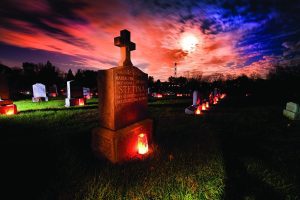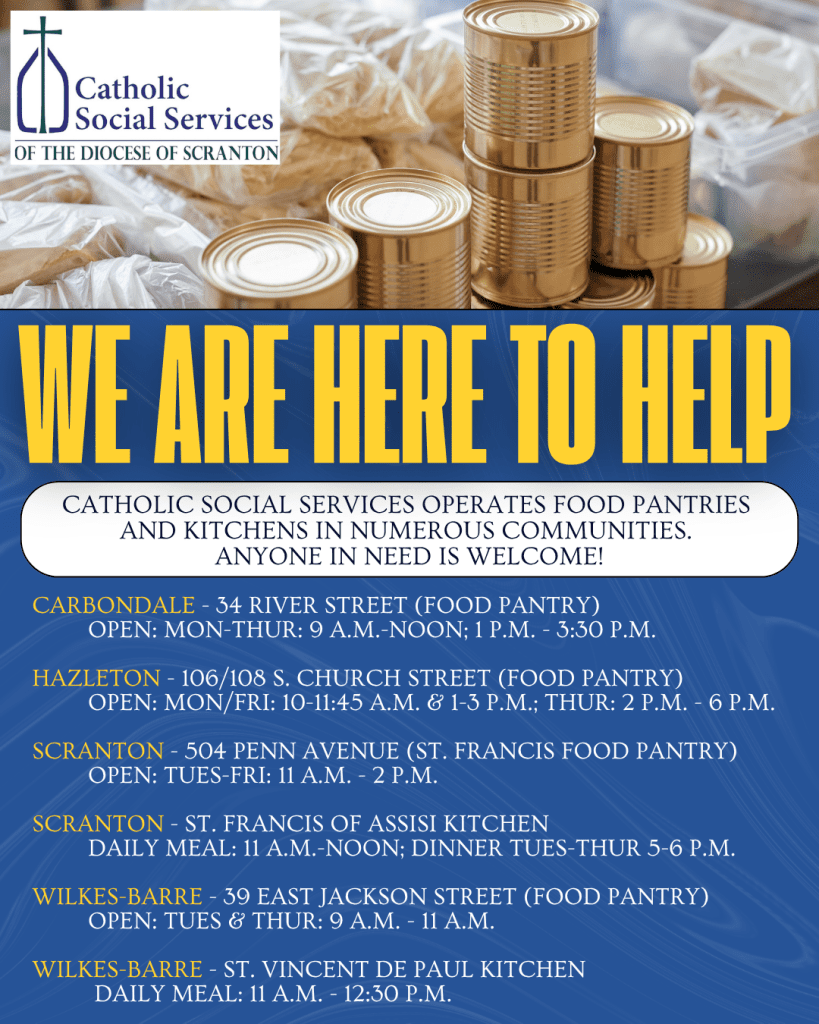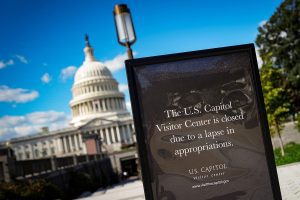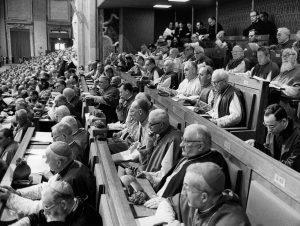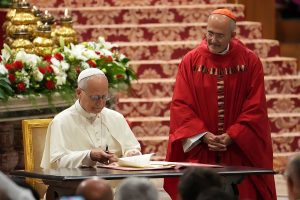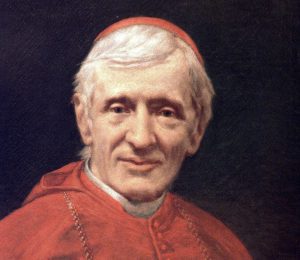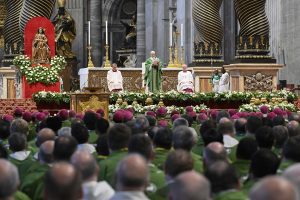VATICAN CITY (CNS) – The lives of St. John Henry Newman and of all the saints teach Christians that “it is possible to live passionately amidst the complexity of the present without neglecting the apostolic mandate to ‘shine like stars in the world,'” Pope Leo XIV said.
Celebrating Mass Nov. 1, the feast of All Saints, Pope Leo concluded the Jubilee of the World of Education and proclaimed St. Newman the 38th doctor of the church, including him among the men and women of the Christian East and West who have made decisive contributions to theology and spirituality.
Earlier in the week, Pope Leo had officially recognized St. Newman as co-patron of education along with St. Thomas Aquinas.
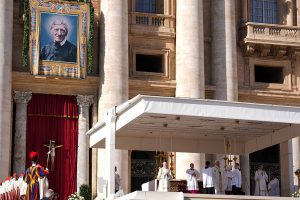
St. Newman was born in London Feb. 21, 1801, was ordained an Anglican priest in 1825, became Catholic in 1845 and was made a cardinal in 1879 by Pope Leo XIII. He died in 1890.
Leading members of the Anglican Church of England and the British government attended the Mass where he was declared a doctor of the church. The Anglican delegation was led by Archbishop Stephen Cottrell of York, currently the top-ranking prelate of the Church of England. The government delegation was led by David Lammy, deputy prime minister of the United Kingdom and secretary of state for justice.
Greeting Archbishop Cottrell publicly at the end of Mass, Pope Leo prayed that St. Newman would “accompany the journey of Christians toward full unity.”
The banner used during St. Newman’s canonization Mass in 2019 hung from the central balcony of St. Peter’s Basilica during the Mass and his relics were placed on a table near the altar.
While St. Newman’s theology, philosophy and thoughts about university education were cited in the Dicastery for the Causes of Saints’ presentation at the Mass, Pope Leo chose to quote in his homily from the British saint’s poem, “Lead, Kindly Light,” now a popular hymn.
“In that beautiful prayer” of St. Newman’s, the pope said, “we come to realize that we are far from home, our feet are unsteady, we cannot interpret clearly the way ahead. Yet none of this impedes us, since we have found our guide” in Jesus.
“Lead, Kindly Light, amid th’encircling gloom, Lead Thou me on,” the pope quoted in English while reading his homily in Italian.
Speaking to the teachers, professors and other educators gathered for the Mass in St. Peter’s Square, Pope Leo said, “The task of education is precisely to offer this Kindly Light to those who might otherwise remain imprisoned by the particularly insidious shadows of pessimism and fear.”
The pope asked the educators to “reflect upon and point out to others those ‘constellations’ that transmit light and guidance at this present time, which is darkened by so much injustice and uncertainty.”
He also encouraged them “to ensure that schools, universities and every educational context, even those that are informal or street-based, are always gateways to a civilization of dialogue and peace.”
Another quote from St. Newman — “God has created me to do Him some definite service; He has committed some work to me which He has not committed to another” — expresses “the mystery of the dignity of every human person, and also the variety of gifts distributed by God,” the pope said.
Catholic educators, he said, have an obligation not only to transmit information but also to help their students discover how much God loves them and how he has a plan for their lives.
“Life shines brightly not because we are rich, beautiful or powerful,” the pope said. “Instead, it shines when we discover within ourselves the truth that we are called by God, have a vocation, have a mission, that our lives serve something greater than ourselves.”
“Every single creature has a role to play,” he said. “The contribution that each person can make is uniquely valuable, and the task of educational communities is to encourage and cherish that contribution.”
“At the heart of the educational journey,” Pope Leo said, “we do not find abstract individuals but real people, especially those who seem to be underperforming according to the parameters of economies that exclude or even kill them. We are called to form people, so that they may shine like stars in their full dignity.”
Lammy, the British government official, told Catholic News Service that he had had the “great honor and privilege” to meet Pope Leo before the Mass.
As a member of the Anglo-Catholic tradition within the Church of England, he said he believes “John Henry Newman really encapsulates the deep connections between our countries and between the Christian communities, across the Christian community.”
The proclamation was “a moment of unity and reflection,” Lammy said. “It’s not just a religious honor, but a powerful moment of cohesion that shows how engaging in our differences can also unite us.”
St. Newman’s legacy, he said, “reminds us that Britain’s religious story is broader than one tradition. It’s been enriched by Catholic thought, courage and contribution.”
In addition, the deputy prime minister said, “I think his life and his writings show how belief and reason together can guide moral leadership, diplomacy, compassion, and I think in an age of polarization, Newman’s insistence on moral reflection calls us back to what truly matters, which is leadership in the cause of what is right and just, which is a principle that should shape our politics.”

